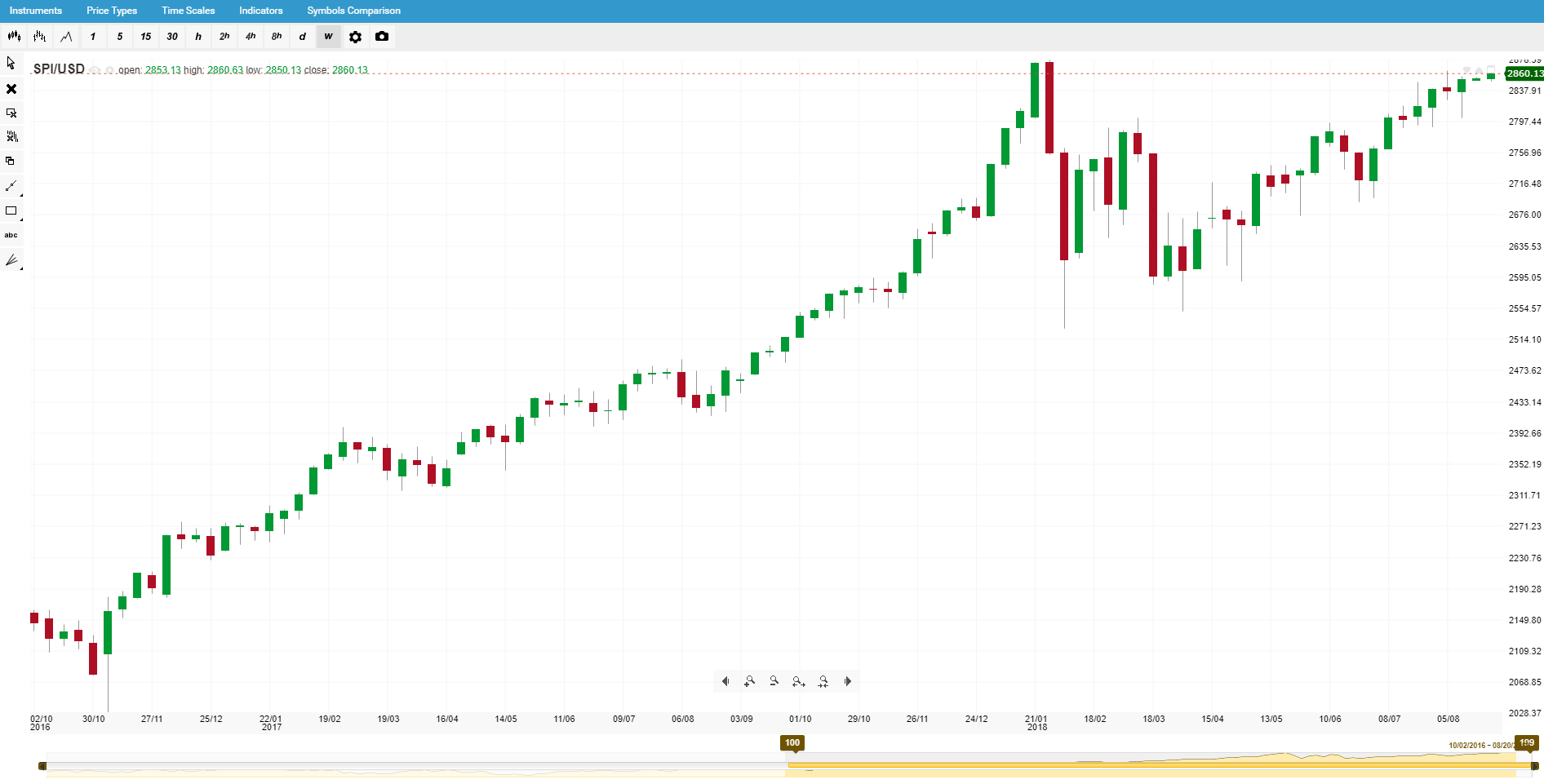What to look for when markets turn
We are undoubtedly in the bull-iest of bull runs, which has made market watchers declare: Bully! The problem is that this bull seems to be running through a tech stock china shop. In the past few months we have Facebook take a significant dive after the Cambridge Analytica controversy and in the past few days we have seen Tesla stock flutter around like a drunken butterfly.
Although we shouldn't be all doom and gloom, there is a fair number of respectable market analysts (including Hungarian prosecuted Hungarian-American investor, George Soros) that believe this bull economy is headed at a flat out run towards the peak of a bubble.
Most investors seek safe havens when volatility increases - and even if you trade indices, there is a certain index for those rainy days (or when the bubble bursts).
Hedging vs. Safe Haven
There are two distinct ways to deal with increased risk of volatility or rapidly fluctuating market conditions - but these two risk management methods are distinctly different.
Safe Havens - safe havens are generally considered indices that would likely not be affected by market volatility or even rise in value during market distress. This is usually due to an abrupt increase in demand when markets become "choppy" and investors become skittish.
Hedges - these are assets that are usually inversely (or negatively) correlated with the positions an investor already holds or intends on opening.
Example of Correlated Indices


Using a hedge lowers your risk but also your potential return, since in a healthy trading strategy risk/reward is a ratio. You need only a very simple understanding of mathematics to understand that when one number in a ratio increases the other decreases as it is divided by the first.
Safe Haven Indices
First and foremost, avoid anything tech, (we're looking at you NASDAQ), because these indices tend to be volatile even when markets are relatively calm.
And here's the twist to this worrisome story - look at the two charts above, the S&P 500 (SP/USD) upon first glance looks more volatile than the actual US Volatility Index (VXX/USD). Christopher Stanton (Sunrise Capital's Chief Investment Officer) seems to agree that perplexingly enough - the US volatility index has become a safe haven, he believes people should go long on.
Only with slight extrapolation, we can assume that volatility may continue - the trade conflict isn't going to go away overnight, inflammatory tweets aren't going to stop until 2020 (fingers crossed) and politically driven sanctions aren't going to be raised anytime soon. On the other hand, compared to its global counterparts the S&P500 seems to be holding up decently:
DAX/EUR

CNX/USD

ASX/AUD

ESX/EUR

SP/USD

The Classic Safe Havens
When talking about safe havens you could easily replace the word with Swiss franc, if you conveniently forget the removal of the currency's peg to the euro - which caught many a banker with their pants down. But again, let's selectively ignore that due to the franc's relatively solid track record.
Gold in recent months has performed surprisingly lackluster - going from low to low. Is this haven of haven's being dethroned? In previous periods gold was tightly inversely correlated with volatility. Unfortunately for gold traders, this relationship seems to be becoming looser and looser.

These old markets seem to have undergone a radical "face-lift". Relationships which were assumed to be stable are now dynamic and assets such as certain cryptocurrencies have emerged at points as safe-havens. Oh, and a reality show star is now the incumbent leader of the "free" world. In these kinds of market conditions risk management should be pretty high on your "to do" list.
Partnering with a broker that not only offers you access to multiple diverse indices but also provides you with transparent pricing and fair trading tools can only help.
This article was submitted by easyMarkets




